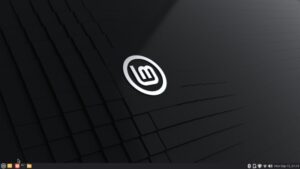Today’s the day that Canonical will release the stable version of Ubuntu 15.04, also known under the human readable name Vivid Vervet.
Like it or not, during the second decade of the 21st century Ubuntu has been the operating system to watch. This, despite the fact that its gathered a large base of followers who loyally despise it. While it’s true that much of this animosity is deserved, just as much is because we love to hate a big shot, and our jealousy over the success of others is made worse when success comes to those who don’t act according to our plans.
 This would definitely describe Ubuntu. From it’s exchange of GNOME for Unity to it’s dropping Wayland for Mir, Canonical doesn’t seem to march to anyone’s orders but its own, something that’s been true since day one.
This would definitely describe Ubuntu. From it’s exchange of GNOME for Unity to it’s dropping Wayland for Mir, Canonical doesn’t seem to march to anyone’s orders but its own, something that’s been true since day one.
Perhaps we see that with the continuation of the Ubuntu desktop.
By now, we might expect that in the name of profitability, Ubuntu would be making plans to drop its desktop to concentrate solely on servers and the cloud, where money is undoubtedly easier to make. This is the path forged by Red Hat and SUSE, both of which long ago quit developing mainstream desktop editions in favor of “community developed” distros, which are mainly testing grounds for their respective enterprise stacks. Ubuntu doesn’t seem to be interested in going that route — not yet, anyway.
Why? Because the desktop fits neatly into Canonical’s plans.
For starters, it separates Ubuntu from the crowd in the server market. It allows it to offer workstations with a quality, easy to use and learn interface that can be tightly integrated with its server offerings. This can also make things easier on an enterprise customer’s IT department, since server and client are built of the same stuff.
As Microsoft continues to lose its ironclad grip on desktops and workstations, meaning business customers might be more willing to try something new than in the not-so-distant past, this might prove to be a valuable asset. Businesses will be able to install workstations at will without regard to licenses. If the folks at Ubuntu are as smart and flexible as I think they are, it also means that businesses can avoid paying workstation support contracts, while still receiving some measure of help from Ubuntu’s support teams.
Both Red Hat and SUSE offer workstations, under terms that might seem somewhat mercenary for the GPL. Red Hat wants $49 yearly for a RHEL desktop without support. A full fledged workstation, without support, runs $179, or $299 with a standard support subscription.
Since free is cheaper, Ubuntu can beat them hands down on price, and with an operating system which is regarded, even by its distractors, as being competitive with both RHEL and SLED. A further competitive advantage might come from the fact that company employees can without cost install Ubuntu on their personal laptops and at-home desktops, which might be a big bonus for customer relations and sales staff.
Then there’s the Ubuntu Phone.
If Canonical can get traction with the phone by offering users a much more organic experience than Android and by getting app makers on board by making porting easy, they just may create a market for preinstalled Ubuntu on desktops and laptops that OEMs such as Dell can’t ignore. Remember, Microsoft is losing its grip on the consumer mindset. With a successful launch of Ubuntu Phone, Canonical could go to work convincing users that their mobile experience would be greatly enhanced through integrating with a Ubuntu home computer. And if Dell and HP suddenly find themselves selling massive numbers of Ubuntu desktops, they’d almost certainly be willing to pay for limited tech support for the new owners of their machines.
I suspect that Ubuntu will be keeping the desktop for a while, if not forever. Not because its a “we’ve got this too” offering that distracts from moneymakers like servers and the cloud, but because it’s an important part of those offerings. And if the Ubuntu Phone gets off the ground, I’m betting you’ll start seeing Ubuntu showing up on your neighbors computers, maybe just as often as Windows.
No matter what you think of Canonical, that will be a good for Linux.
This weekend I’ll be taking a look at Ubuntu’s latest and greatest. Early next week, I’ll tell you what I think.
Christine Hall has been a journalist since 1971. In 2001, she began writing a weekly consumer computer column and started covering Linux and FOSS in 2002 after making the switch to GNU/Linux. Follow her on Twitter: @BrideOfLinux










I’m surprised Redmond hasnt gotten through his head to use the linux kernel and ext4 to create a more stable windows. Theyve been selling substandard product for so long you’d think they’d give up on their mediocrity. I was hoping their so called new found fondness for open-source would open their eyes in time for windows 10.
I became an Ubuntu user somewhat reluctantly, but it is now my preferred desktop OS. Canonical earned my respect by giving us a very capable system that works. Unity is good enough that non-technical users are comfortable, and I can run the DE I prefer. The large user base has created a wealth of searchable information and support options.
Canonisoft may or may not have a good product.
I left because of their ethics. Not a good member of
the FOSS Community.
That may change.
NTFS filesystem is much faster than ext4 and windows kernel is higly optimised for power saving compared to linux kernel, so when it comes to laptops windows has no competition also when it comes to speed.
I think you nailed it why Canonical will continue offering a desktop version for free. It allows companies and individuals to install it for nothing. With the excellent online documentation most will not need to spend any money on support. This is a long term play and potentially a very shrewd one.
Canonical and OS vendors in general probably make most of their real profits from enterprise users not SOHO users. Offering Ubuntu for free to everyone with the OPTION to purchase a support contract means they are not getting nitpicked by SOHO users or have to have very restrictive support policies. MS does not support users who bought Windows through an OEM; it is the OEM’s responsibility.
“NTFS filesystem is much faster than ext4” – LOL, maybe on the technical specification but in real life a big fat no.
File Operation transaction speed is high priority on Linux primarily for servers. Compressing, Uncompressing, Moving and Copying files run immensly faster on Linux.
I’ve even noticed Windows Apps boot faster in WINE than they do natively on a vanilla install of Windows.
Also – what’s your username “ArchUser” ? You’re such a faky fake troll – get out of my FOSS troll.
archuser said “windows has no competition also when it comes to speed”
ROTFOL. That’s the funniest thing I’ve heard all week.
“… so when it comes to laptops windows has no competition also when it comes to speed.”
This is the old “magician’s distraction ploy” and it’s been a successful sleight of hand for a number of years. Yeah, the system presents the user with a Graphical desktop quickly, it’s truly impressive. But try to do something on that graphical desktop for the first 2-4 minutes after you see it. It bogs down like a 59 Studebaker in a Monster Truck Mud Rally. The longer the Windows system resides on the desktop, the slower it gets. What causes this is left up to people smarter than me but it’s a real time phenomenon that almost every Windows user learns to deal with.
With most Linux distros I’ve used, when you see the desktop, then you can work on the desktop.